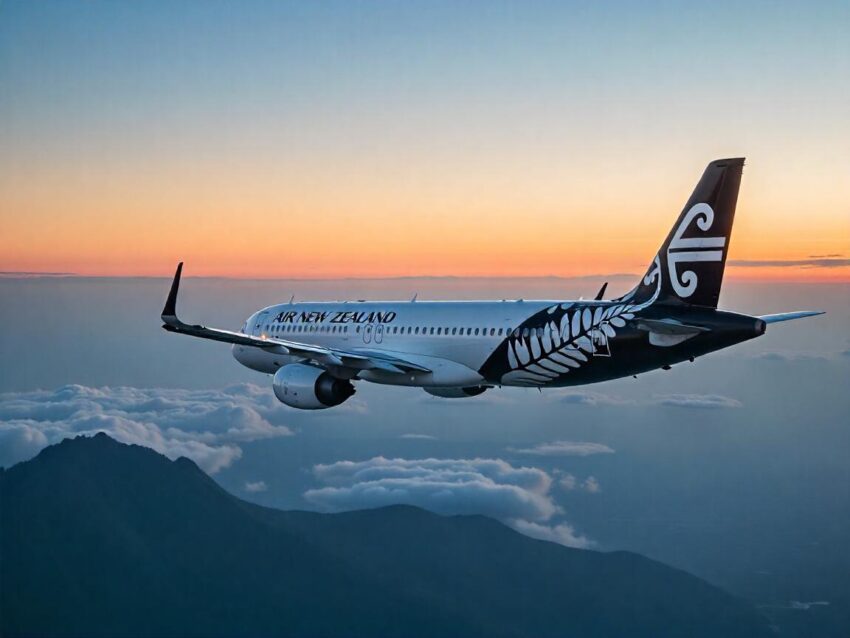
Air New Zealand is making a bold statement in domestic aviation with the reintroduction of jet services to Hamilton for the first time in 25 years. Starting 18 September 2025, select flights on the Hamilton–Christchurch route will be operated by a 171-seat Airbus A320, significantly increasing capacity and connectivity between the North and South Islands. This move isn’t just about more seats—it’s about unlocking economic growth, supporting tourism, and meeting the evolving needs of travelers seeking efficiency and flexibility. With approximately 25,000 additional seats added annually, this jet service marks a pivotal moment for regional air travel in New Zealand. It reflects Air New Zealand’s strategic commitment to strengthening inter-island links and enhancing accessibility for key regional centers. As demand continues to rise for faster, more comfortable domestic travel, this announcement is set to elevate Hamilton’s status as a vital aviation hub and offer travelers a more seamless journey across the country.
The aviation industry in New Zealand just took a giant leap forward.
In a landmark move that blends nostalgia with strategic foresight, Air New Zealand is bringing back jet services to Hamilton for the first time in 25 years. This long-awaited return signals more than just an aircraft upgrade—it represents a bold new era for domestic connectivity and regional economic expansion.
Starting 18 September 2025, a 171-seat Airbus A320 will fly select services on the Hamilton–Christchurch route, injecting fresh energy into one of the airline’s fastest-growing regional corridors.
A Game-Changer for Waikato and Canterbury
This isn’t just a new flight. It’s a transformational link between two thriving regions.
Hamilton, at the heart of the Waikato, is more than a gateway—it’s an innovation hub, a booming economic center, and now a fully-fledged regional air hub. Meanwhile, Christchurch remains a pillar of the South Island’s tourism, agriculture, and business landscape.
Connecting these two powerhouses with jet service slashes travel times, boosts capacity, and injects new life into regional commerce.
The addition of an A320 aircraft to this route unlocks around 25,000 extra seats annually, offering much-needed bandwidth for both business and leisure travelers. It also ensures smoother, more comfortable journeys with more room, faster service, and better scheduling flexibility.
Strategic Scheduling for Maximum Impact
Jet flights won’t replace turboprop services—they’ll enhance them.
The ATR 72s currently operating on the route will continue to fly, giving passengers all-day frequency options, while the new jet slots in at peak travel times. This strategy means travelers benefit from both convenience and capacity.
By combining large jets with reliable turboprops, Air New Zealand is addressing two key pain points in domestic travel—limited seating and inflexible schedules.
More options. More comfort. More connectivity.
The Bigger Picture: Domestic Air Travel Reinvented
Air New Zealand isn’t treating this like a one-off.
This is the second time the airline has reintroduced jets on a regional route, following the success of Invercargill–Auckland in 2019. The model is working—and expanding it means strengthening the North-South Island link, which is critical for trade, tourism, and national cohesion.
The ripple effect of this decision goes beyond airports. More capacity means more bookings for hotels, more footfall in restaurants, and greater ease for businesses that depend on fast, reliable transport between New Zealand’s economic zones.
This isn’t just an airline story. It’s a national mobility breakthrough.
Redeploying Resources to Strengthen the Network
As jets are introduced on the Hamilton–Christchurch route, Air New Zealand is redeploying the freed-up ATR aircraft elsewhere in the regional network.
This clever resource shuffle builds resilience into the system.
Smaller routes get better support. Communities far from city centers gain improved access. And overall, the airline’s domestic strategy becomes more agile, efficient, and future-ready.
It’s a masterclass in using existing assets to amplify impact—without waiting for external investments or expansion budgets.
Supporting Business, Tourism, and Lifestyle Travel
Air New Zealand is targeting three traveler types with this rollout: business professionals, leisure seekers, and those catching connections to international flights.
For business travelers, jet flights mean time saved and better chances of securing preferred time slots.
For tourists, it means smoother access to iconic destinations in both Waikato and Canterbury—think Hobbiton, Waitomo, Lake Tekapo, and the Southern Alps.
For those connecting internationally, it means less stress, more convenience, and a stronger case for choosing regional airports over larger hubs.
The message is clear: regional doesn’t mean limited anymore.
A Vote of Confidence in Hamilton’s Growth
This move sends a strong signal to the country—Hamilton is no longer a secondary city in air travel planning.
As Waikato continues its upward economic trajectory, the return of jet services validates its status as a regional powerhouse. It also aligns with broader national strategies that focus on decentralizing growth and avoiding over-reliance on Auckland as the country’s only major gateway.
Hamilton now stands shoulder to shoulder with key centers—connected, competitive, and confident.
Resilience in a Time of Uncertainty
In an era defined by economic shifts and global volatility, Air New Zealand’s investment in regional air service is more than timely—it’s courageous.
The airline industry is still recovering from pandemic-induced turbulence. Meanwhile, geopolitical instability, fuel price swings, and changing traveler behavior continue to challenge planning.
Yet here is Air New Zealand, choosing to double down on its home turf. Choosing growth. Choosing regional empowerment. Choosing resilience.
That’s more than a business decision—it’s a strategic declaration.
The Road (and Sky) Ahead
With the launch just around the corner, excitement is already building. Local businesses, travel agents, and regional councils are lining up to support the initiative.
The success of this route could open doors to more jet-enabled regional connections, pushing New Zealand’s domestic travel infrastructure into a new era of high-speed, high-capacity service.
Other cities are watching. Other airlines are taking notes.
As the Airbus A320 prepares for takeoff in September, it carries with it more than passengers—it carries the hopes of two regions, the blueprint for regional resilience, and the future of connected travel in New Zealand.
The post Air New Zealand Ignites Regional Growth with Jet Service Return to Hamilton After Twenty Five Years appeared first on Travel And Tour World.